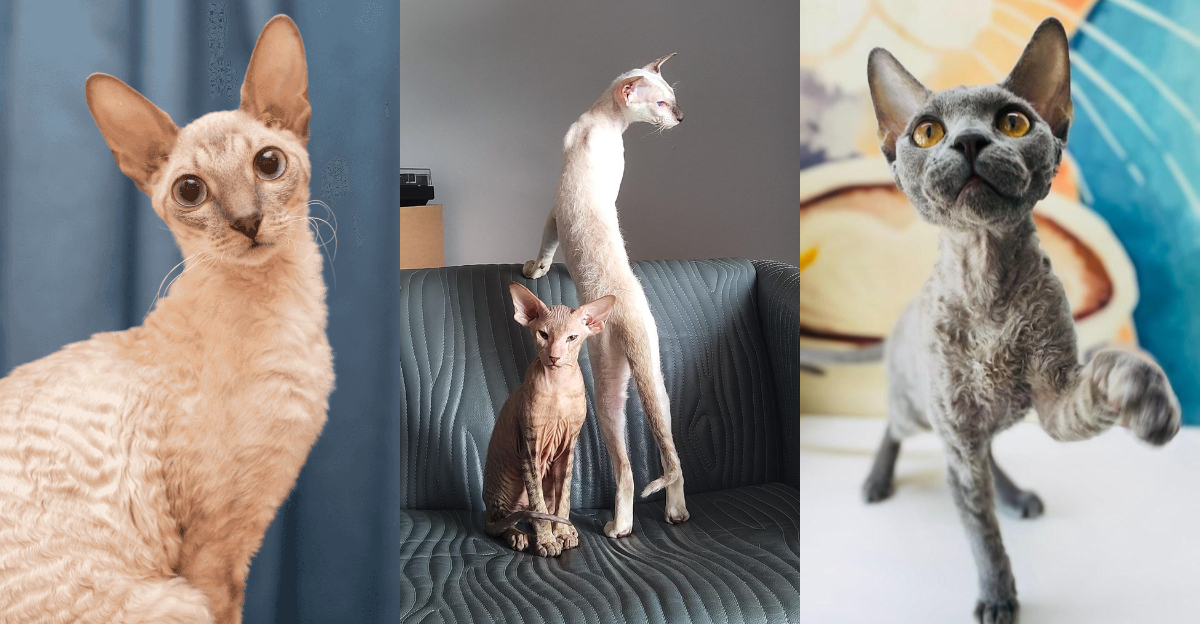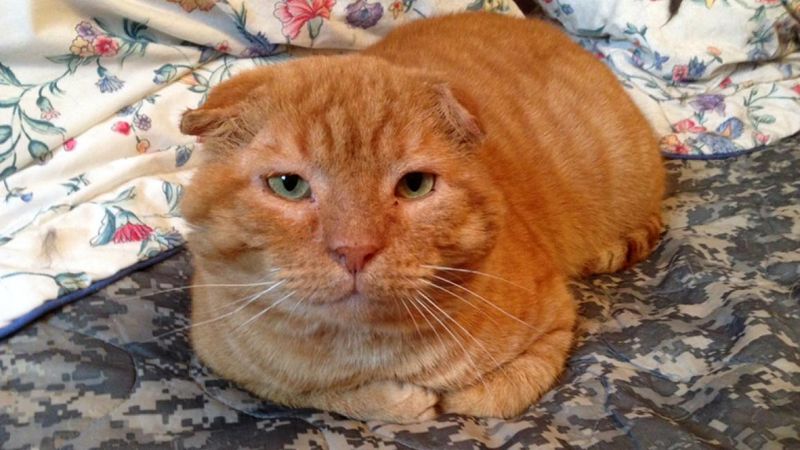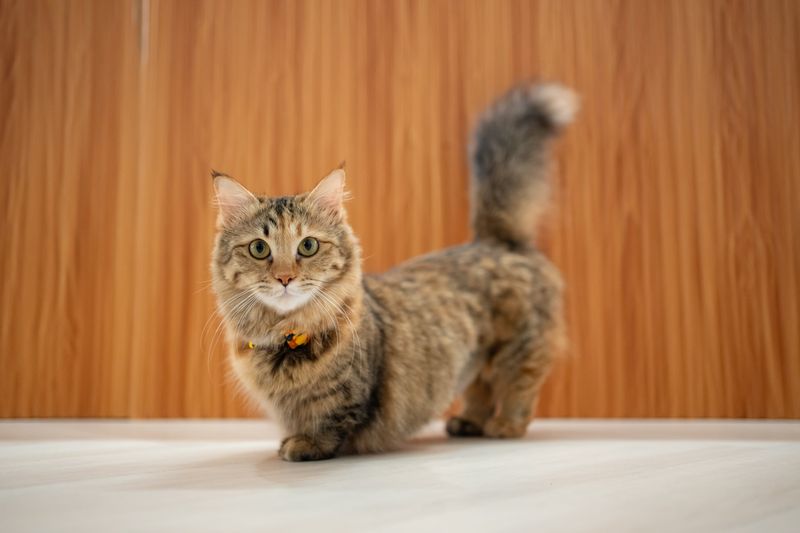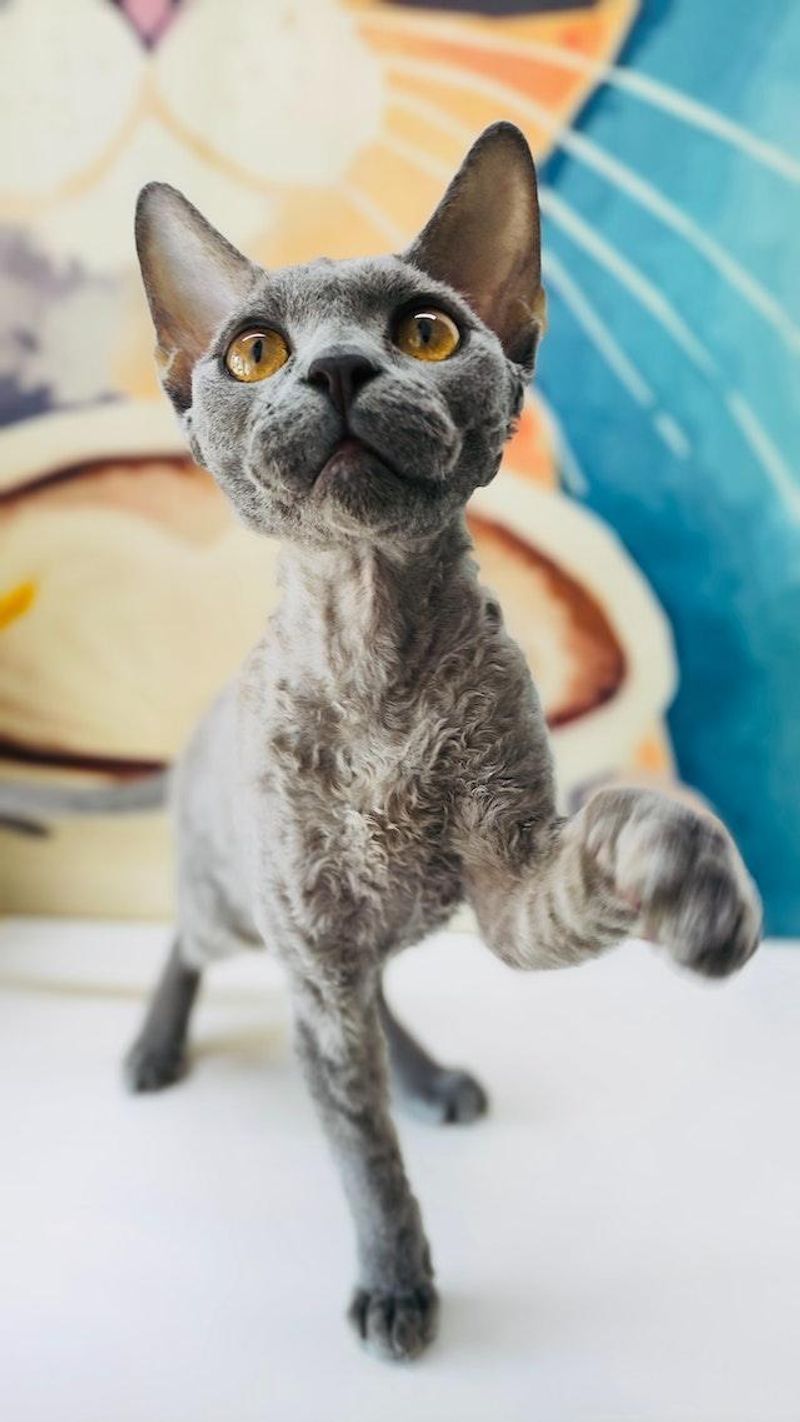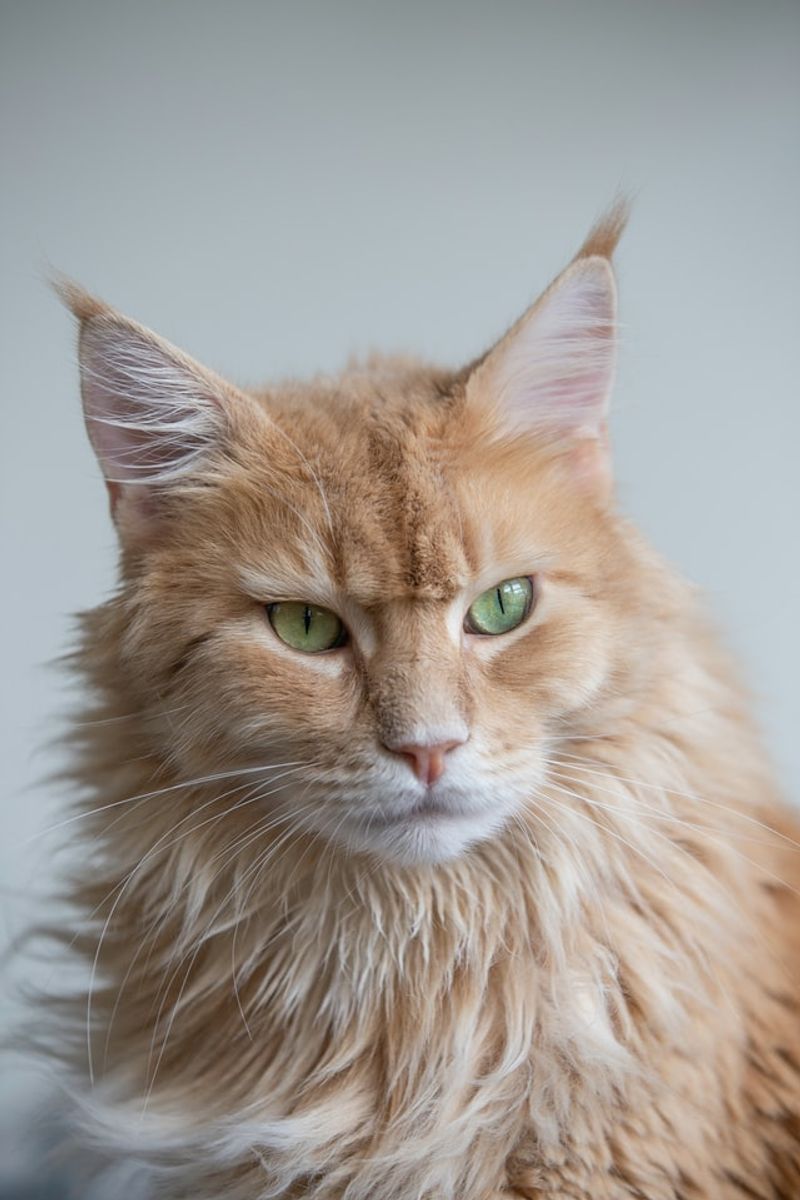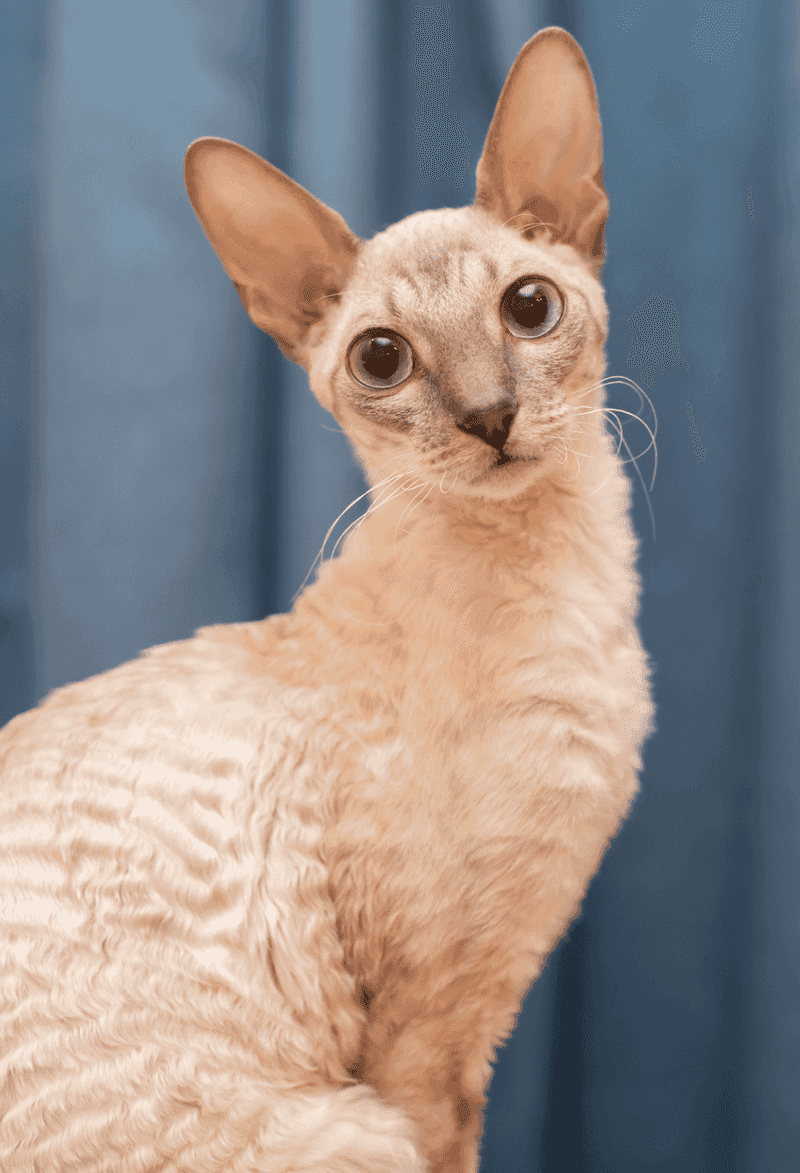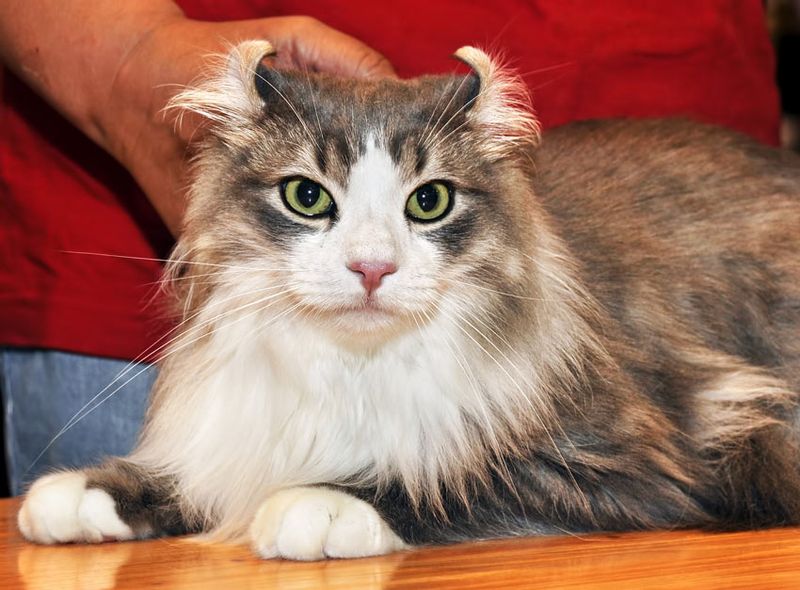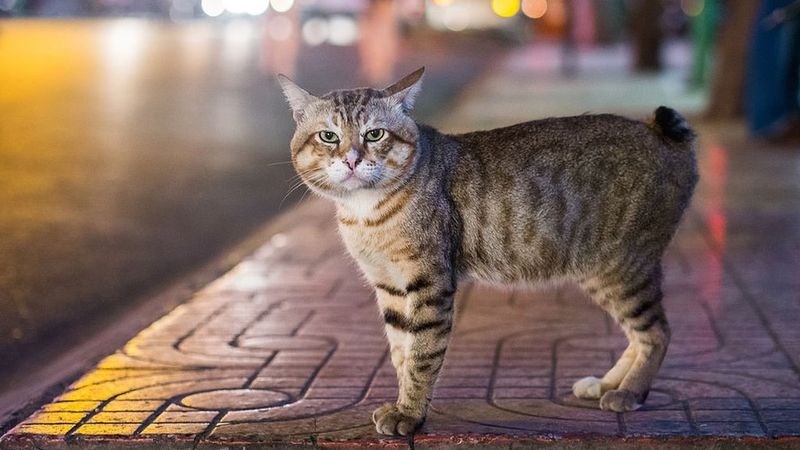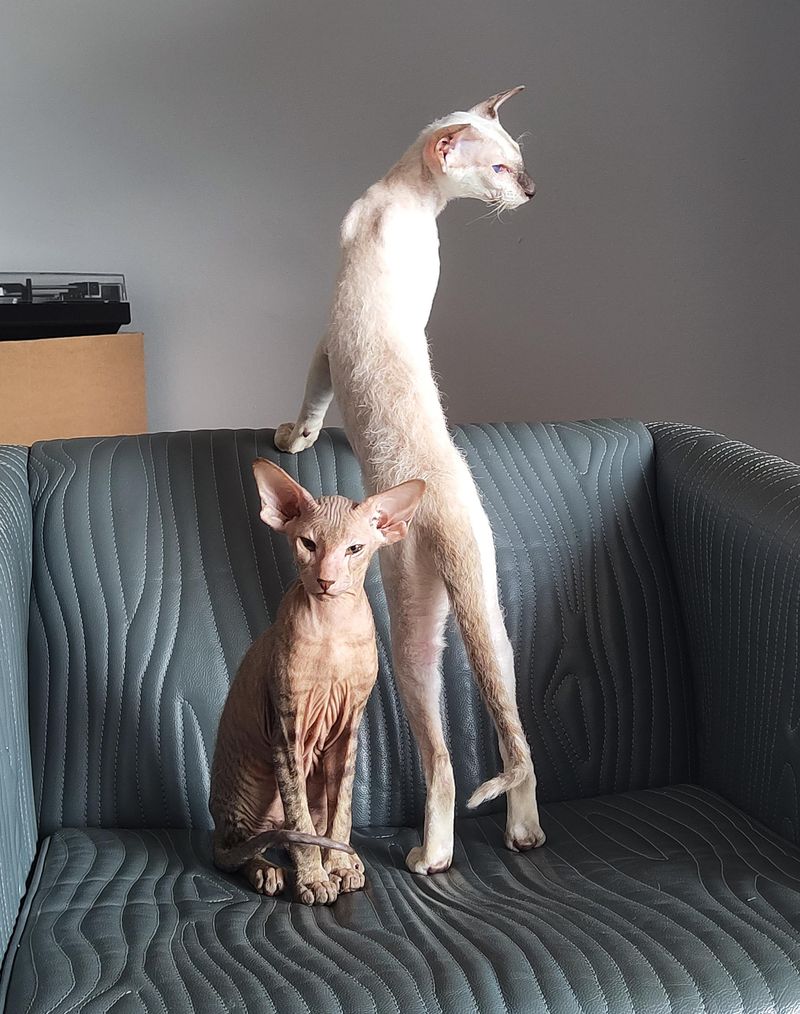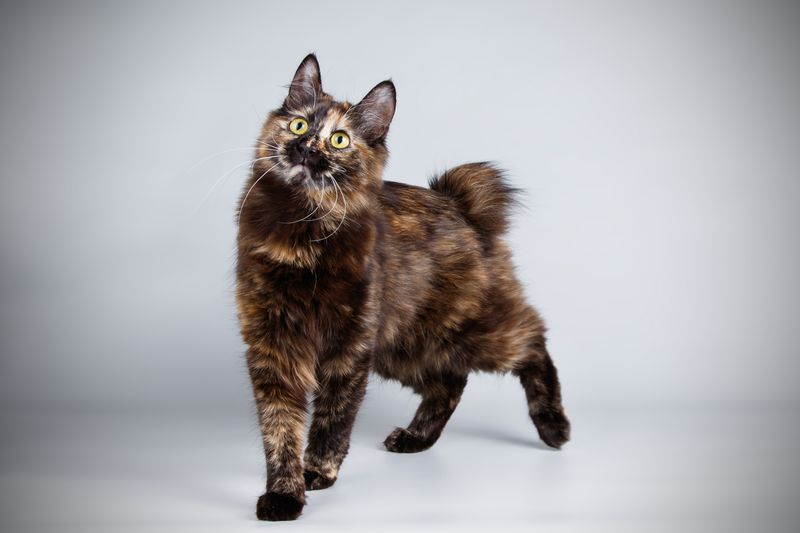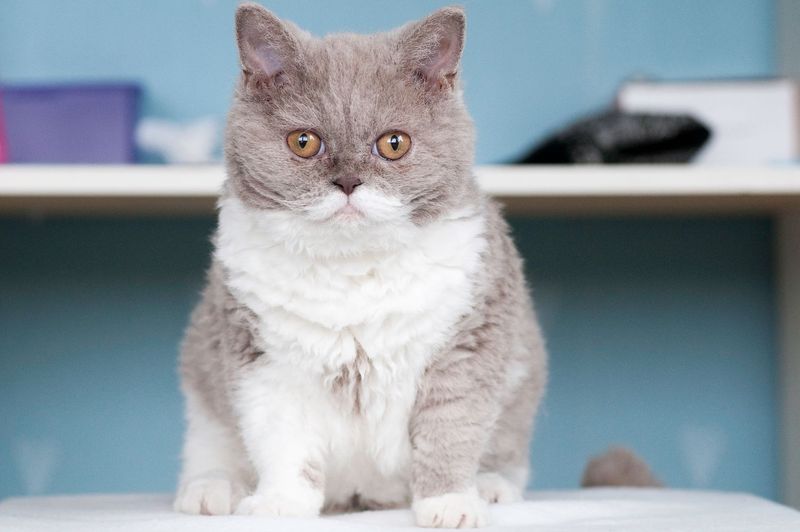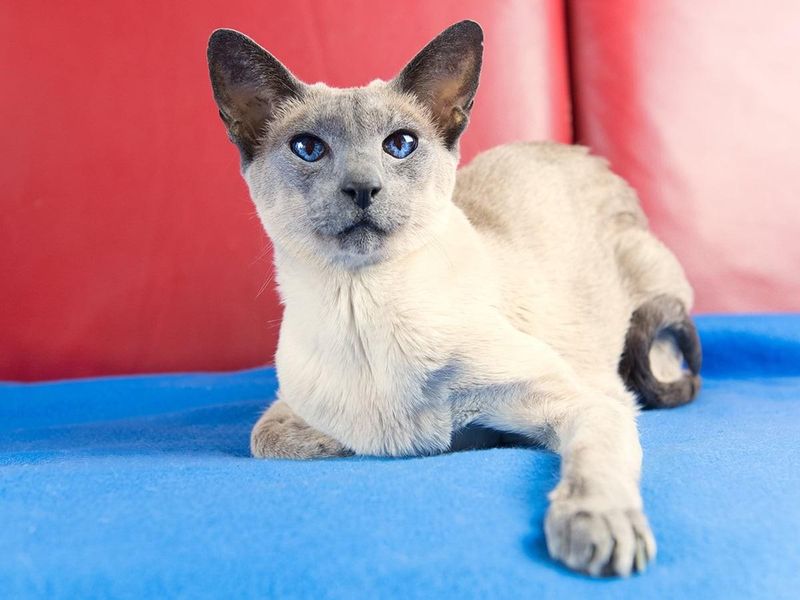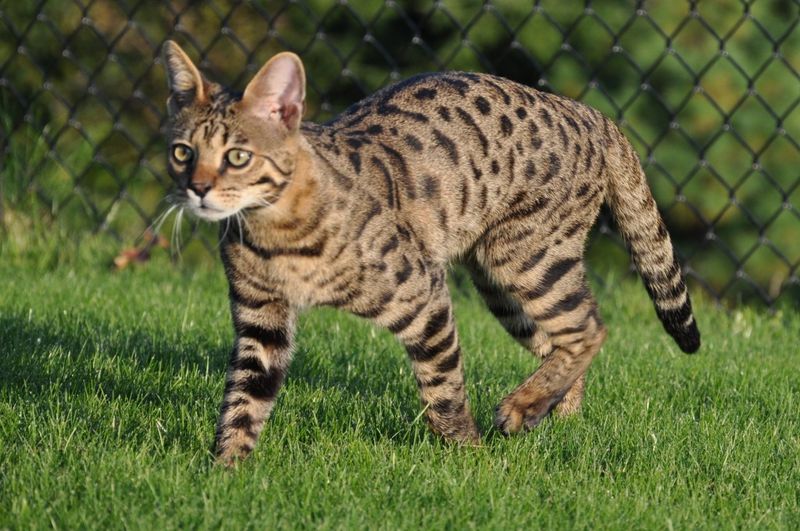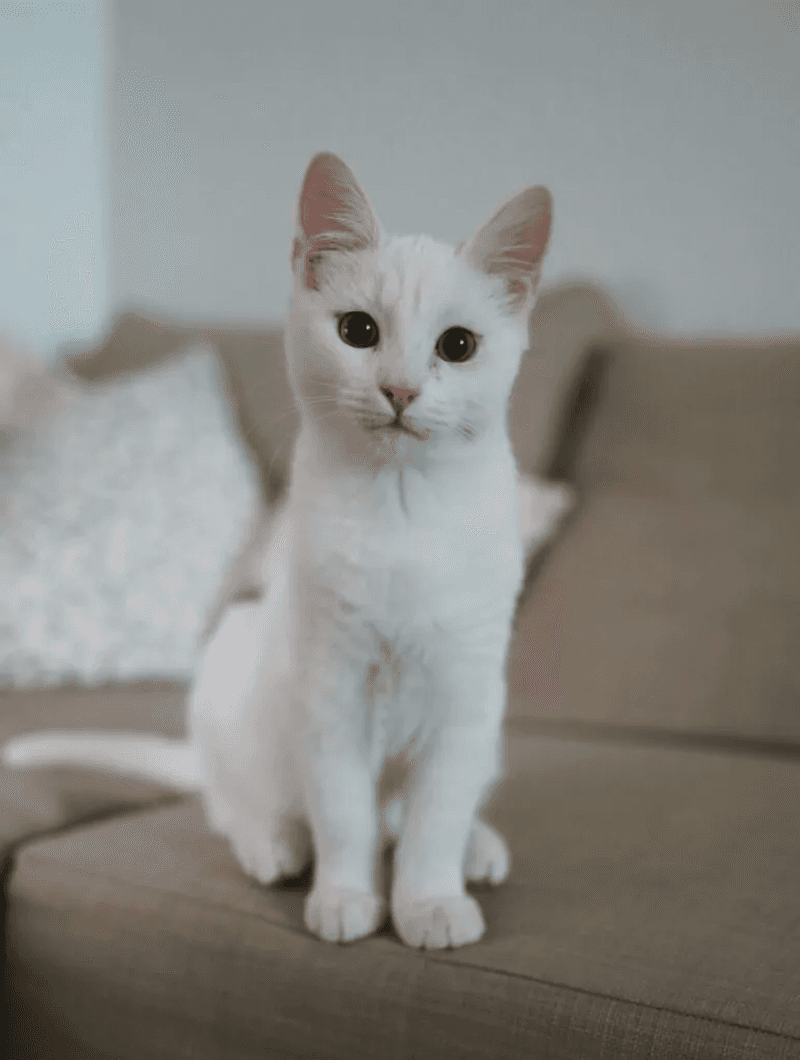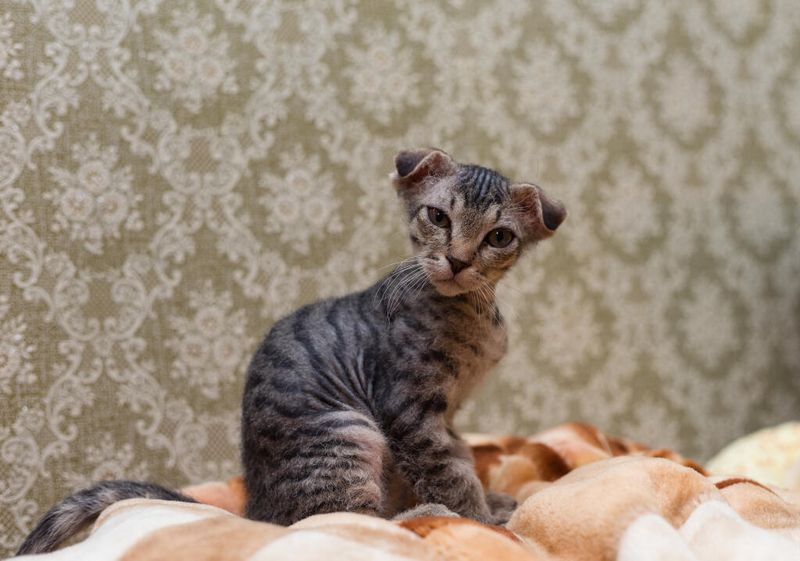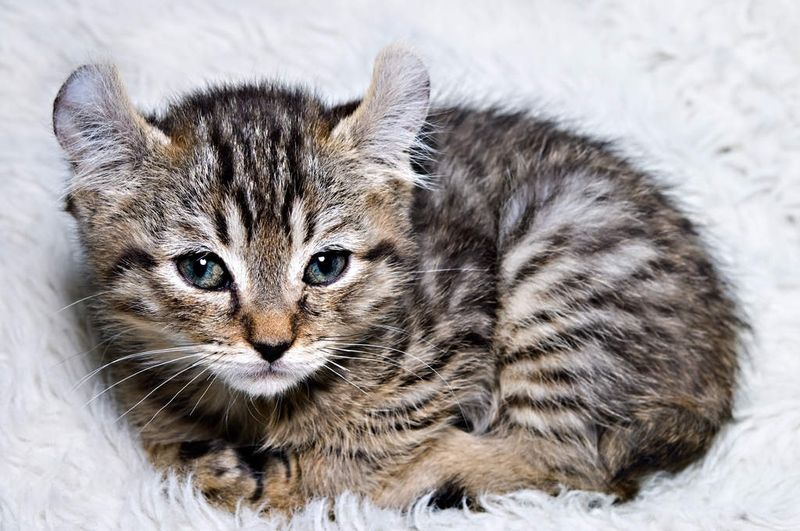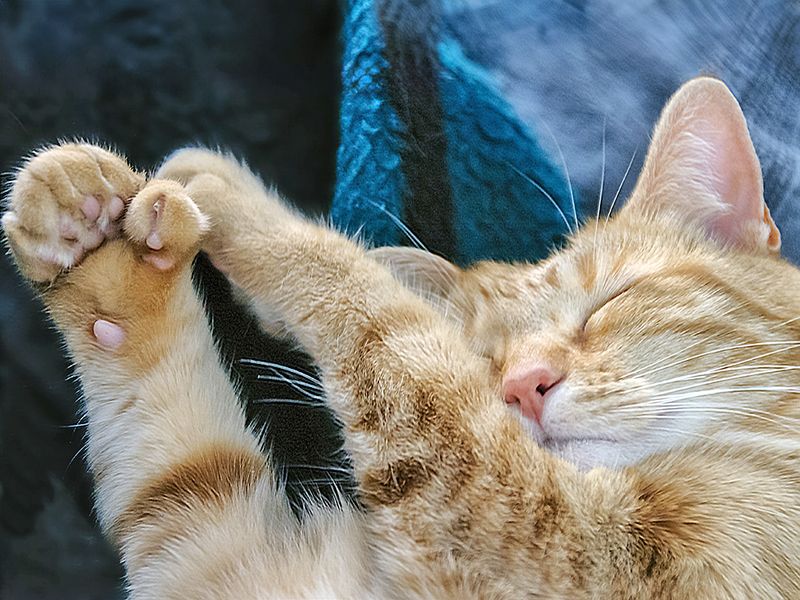📖 Table of Content:
Cats exhibit an incredible variety of shapes, sizes, and physical traits that distinguish them from one another. Some breeds showcase striking features that are far from ordinary, capturing attention at first glance. These unique characteristics contribute to the fascinating diversity found within the feline family.
Certain cats boast remarkable traits such as hairless skin, extra toes, or unusual coat patterns that set them apart from the typical pet. These features not only make them visually distinct but also contribute to their charm and personality. Observing these special attributes offers insight into the wide range of feline genetics.
The world of cats is filled with breeds that stand out due to their extraordinary physical qualities. From sleek and slender forms to playful polydactyl paws, these cats inspire admiration and curiosity. Exploring these breeds reveals just how varied and captivating cats can truly be.
1. Sphynx
The most striking feature of the Sphynx is its apparent hairlessness. Despite their naked appearance, these cats actually have a fine layer of down that feels like warm suede to the touch. Their wrinkled skin comes in various colors and patterns, just like a furred cat’s coat would.
Sphynx cats have oversized ears, prominent cheekbones, and large lemon-shaped eyes that give them an almost alien appearance. Due to their lack of fur, they feel warm to the touch and often seek out cozy spots to maintain body heat.
These cats require regular bathing as they don’t have fur to absorb their natural oils.
2. Scottish Fold
Famous for their folded ears that bend forward and downward, Scottish Folds possess one of the most recognizable profiles in the cat world. This distinctive trait results from a naturally dominant gene mutation that affects the cartilage throughout their bodies.
Not all kittens develop folded ears – some remain straight-eared (called ‘straights’). The fold usually becomes apparent around 3-4 weeks of age. These medium-sized cats have round faces, round eyes, and rounded bodies that add to their overall adorable appearance.
Their plush, dense coat comes in virtually every color and pattern possible for cats.
3. Munchkin
Short legs are the defining characteristic of the Munchkin cat. Their legs can be about half the length of an average cat’s, resulting from a natural genetic mutation. Despite their short stature, Munchkins move surprisingly well and can even run quickly, though they typically can’t jump as high as other cats.
These cats maintain proportional bodies with normal-sized heads, torsos, and tails. Their appearance has been compared to dachshunds or corgis in the dog world. Munchkins come in all coat colors, patterns, and lengths.
Many owners report that these cats often sit up on their hind legs like rabbits to get a better view of their surroundings.
4. Devon Rex
The Devon Rex sports an unusual wavy, short coat that feels like soft suede. Their fur grows in loose curls, creating a disheveled appearance that’s completely natural. Some Devon Rex cats have such sparse fur that their skin shows through in places.
Beyond their unique coat, these cats have distinctively large ears set low on the sides of their wedge-shaped heads. Their eyes are large and wide-set, while their cheekbones are prominently high, giving them an elfin or pixie-like appearance.
Their slender bodies and long legs contribute to their impish look, making them one of the most distinctive-looking cat breeds around.
5. Maine Coon
Known for their grand stature, Maine Coons can weigh as much as 18 pounds in males and stretch up to 40 inches long from nose to tail. Their muscular, rectangular frames are crowned with distinctive ears featuring lynx tips—furry tufts that rise vertically from the ear points.
Their bushy, raccoon-like tails are nearly as long as their bodies. Maine Coons have unique paws with extra tufts of fur between their toes, acting as natural snowshoes in winter conditions.
Their shaggy, water-resistant coats feature longer fur around the neck forming a lion-like ruff, especially prominent in males.
6. Cornish Rex
With a coat as soft as crushed velvet or lamb’s wool, the Cornish Rex stands out among cats. Their fur consists solely of a downy undercoat, missing the typical outer and middle layers found in other breeds. This unique feature is caused by a naturally occurring genetic mutation.
Their distinctive physical appearance includes a slender, arched body with a tucked-up abdomen similar to a greyhound dog. High cheekbones, hollow cheeks, and a Roman nose create their characteristic profile.
The Cornish Rex has unusually large ears set high on an egg-shaped head. Their long, slender legs and whippy tail complete their elegant, almost alien appearance.
7. American Curl
American Curls are immediately recognizable by their unique ears that curl backward in a graceful arc. All American Curl kittens are born with straight ears that begin to curl within 48 hours, reaching their final position around 4 months of age. The degree of curl varies from cat to cat, ranging from almost straight to a dramatic 180-degree curve.
These medium-sized cats have silky coats that can be either short or long. Their walnut-shaped eyes are expressive and set wide apart on a modified wedge-shaped head.
American Curls typically have plumed tails that balance their body proportions and add to their elegant appearance.
8. Manx
Famous for their lack of tails, Manx cats owe this feature to a genetic mutation. Tail length among Manx cats varies widely, ranging from completely tailless rumpies to stumpies with short tails, and even longies that have full tails. This diversity sets the breed apart from others.
Their bodies are compact and rounded with a solid bone structure. Manx cats have notably powerful hind legs that are longer than their front legs, creating a distinctive rabbit-like hop when they run. This rear-end height also gives them a characteristic rounded appearance.
Their double coat is thick and plush, providing excellent protection against harsh weather on their native Isle of Man.
9. Peterbald
Peterbalds display extraordinary skin diversity, ranging from completely hairless to having a full coat. Most fascinating is their ability to change coat types throughout their lives. A kitten born with a sparse coat might eventually become completely bald, or vice versa.
Their skin often feels sticky to the touch due to natural oils that would normally be absorbed by fur. Physically, Peterbalds have an elegant, oriental body type with long, slender limbs and whippy tails. Their heads form a distinctive wedge shape topped with oversized, pointed ears.
Wrinkles commonly appear on their skin, especially around the face, giving them a somewhat wizened appearance despite their elegant build.
10. Japanese Bobtail
A hallmark of the Japanese Bobtail is its naturally shortened tail, which resembles a little pom-pom or a rabbit’s tail. Every tail has its own distinctive pattern of curves and kinks, making each cat’s tail completely unique. The tail usually measures between 1 and 3 inches when fully extended.
These cats have long, lean bodies with high-set back legs that make them excellent jumpers. Their triangular heads support large, expressive eyes that slant slightly upward at the outer corners, giving them an alert, interested expression.
The most famous coat pattern associated with this breed is the tri-colored calico (mi-ke in Japanese), which is considered lucky in Japanese culture.
11. Selkirk Rex
Often described as having a coat like sheep’s wool, the Selkirk Rex displays loose curls scattered across its body. Even their whiskers curl, adding to their unique look. Unlike other Rex varieties, they maintain all three traditional layers of cat fur, which makes their coat particularly full and soft.
These medium to large cats have substantial, heavy-boned bodies with round heads and full cheeks. Their eyes are large and round, adding to their sweet expression.
The curly coat comes in both long and short varieties, with the longhaired version creating spectacular ringlets that give these cats an almost regal appearance despite their somewhat disheveled look.
12. Siamese
Siamese cats are immediately recognizable by their striking color point pattern – darker coloration on the face, ears, paws, and tail contrasting with a lighter body. This temperature-sensitive coloration results from a form of partial albinism, where cooler areas of the body develop darker fur.
Their almond-shaped blue eyes are perhaps their most hypnotic feature, set at a slant that enhances their exotic appearance. Modern Siamese have an extremely sleek, tubular body type with a long, thin tail and large, triangular ears that continue the lines of their wedge-shaped head.
Their short, fine coat lies close to the body, highlighting their elegant, athletic build.
13. Savannah
With their remarkable height and exotic appearance, Savannahs reflect the wild ancestry of the serval. First-generation Savannahs often tip the scales at up to 20 pounds and reach 16 inches tall at the shoulder. These dimensions place them among the tallest domestic cat breeds.
Their spotted coat pattern resembles that of a wild serval or cheetah. Large, upright ears sit atop a small head, while their long necks and legs contribute to their exotic appearance. Savannahs have distinctive tear-mark stripes running from the corner of their eyes down their cheeks.
Their bodies are long and lean with prominent shoulder blades that become especially noticeable when they walk or run.
14. Singapura
The Singapura holds the distinction of being the world’s smallest cat breed, with adults typically weighing just 4-8 pounds. Despite their tiny size, these cats have muscular bodies and are surprisingly solid when picked up.
Their most striking feature is their unusually large eyes and ears relative to their small faces, giving them an alert, curious expression. Their short, fine coat displays a unique ticked pattern called sepia agouti, where each hair has several bands of color.
Singapuras have only one coat color: a warm ivory base with brown ticking that creates their distinctive appearance. Their small size and delicate features have earned them the nickname “peewee of the cat fancy.”
15. Ukrainian Levkoy
Combining the folded ears of a Scottish Fold with the hairless body of a Sphynx, the Ukrainian Levkoy presents a captivatingly unusual appearance. Their ears fold forward and downward, while their skin remains completely bare. This pairing lends them an otherworldly, almost alien charm.
Their skin typically shows wrinkles, especially around the neck, legs, and muzzle. The head shape is distinctive – angular and long with prominent cheekbones and a flat forehead that forms a straight angle with the nose.
These cats have almond-shaped eyes that slant slightly downward toward the nose, adding to their unique facial expression. Despite being relatively new, they’re quickly gaining recognition for their extraordinary appearance.
16. Highlander
The defining features of Highlander cats include backward-curled ears and a distinctive short bobbed tail. Their ears form a loose curl that leaves the base broad and open, differing clearly from the tighter, more compact curl seen in American Curls.
Their tail ranges from completely bobbed to several inches long, often with kinks or curves. These large, muscular cats typically weigh 10-20 pounds and have a rectangular body with a slight rise to the hindquarters.
Highlanders have distinctive polydactyl paws with extra toes, giving them a mitten-like appearance. Their wide-set eyes and full muzzle create an expression that’s often described as wild or exotic.
17. Polydactyl
Polydactyl cats stand out with their extra toes – sometimes having up to seven toes on each paw instead of the normal five on front paws and four on back paws. These additional digits create the appearance of mittens or snowshoes on their feet.
The extra toes are usually fully functional with bones, flesh, and nail beds. Often, the extra digits appear on the thumb side of the paw, giving some polydactyl cats an almost opposable thumb that allows them to grasp objects with surprising dexterity.
While polydactylism can occur in any cat breed, it’s especially common in certain regions like Eastern North America and Southwest England, where sailors once considered them lucky ship’s cats.
